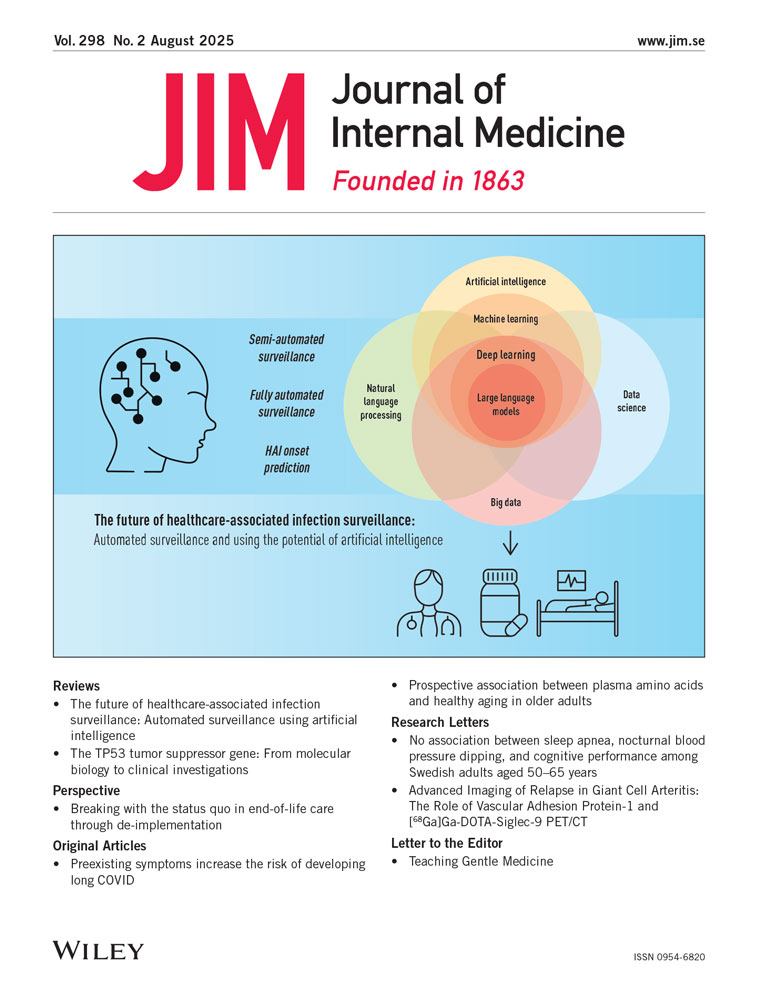Low frequency of the common Norwegian and Finnish LDL-receptor mutations in Swedish patients with familial hypercholesterolaemia
Abstract
. Lind S, Eriksson M, Rystedt E, Wiklund O, Angelin B, Eggertsen G (Karolinska Institute at Huddinge University Hospital, Stockholm, Sahlgren's Hospital, Göteborg, Sweden). Low frequency of the common Norwegian and Finnish LDL-receptor mutations in Swedish patients with familial hypercholesterolaemia. J Intern Med 1998: 244: 19–25.
Objective
. To evaluate the frequency of the common Finnish and Norwegian mutations in the low density lipoprotein (LDL) receptor gene in Swedish patients with familial hypercholesterolaemia (FH), and to start screening for other mutations in these patients. In contrast to the situation in Norway and Finland, where the frequency of common mutations causing the disease has been determined, very little about the mutation spectrum is known in Sweden.
Settings and subjects
. In total, 182 unrelated Swedish patients fulfilling clinical criteria for FH were investigated. Of these, 112 were identified at Huddinge University Hospital in Stockholm, and 70 at Sahlgren's Hospital in Göteborg. They were screened by single-strand conformation polymorphism (SSCP) for mutations in exons 3, 4, 6 and 9 of the LDL-receptor gene and by polymerase chain reaction (PCR) for the most common FH mutations occurring in Finland, and the prevailing mutation causing familial defective apolipoprotein B-100 (FDB).
Results
. Mutations in the LDL receptor were identified in 25 of the 182 patients. Of these, 10 represented FH-Helsinki and one FH-North Karelia. Other mutations identified were FH-Svartor (four patients), FH-Elverum (one patient), FH-Padova (two patients), FH-Morocco (one patient) and FH-Algeria-1 (one patient). One patient was simultaneously positive for two mutations formerly described in Sweden: E256K (exon 6) and I402T (exon 9). Another mutation caused replacement of one amino acid residue in exon 6 (C292Y). Two new mutations were found, both in exon 6: one nonsense mutation in the codon #275 for cysteine (FH-Huddinge, two patients), and one deletion of two base-pairs in the codon for leucine in position 254 (FH-Göteborg, one patient). The mutation for FDB was found in three patients.
Conclusions
. The mutation pattern in Swedish FH patients differs considerably from that in Finland and Norway. The two new mutations discovered will probably cause serious functional disturbances in the LDL-receptor function. Thus far, no predominant mutation was seen in Swedish FH-patients.




